Realistically speaking, telling a person with hearing loss to choose the best hearing aids may be easier said than done. With the advanced technology nowadays, it is easy for brands to claim that they are the best hearing aid in the market. Best hearing aids do not necessarily mean that they are the most expensive in the world; it simply means that they are of good quality and that they can serve its purpose of alleviating hearing loss symptoms to benefit the customer and give more value to daily speech adjustment and communication.
Table of Contents
- Best Hearing Aids: How much do hearing aids cost?
- When Should You Consider Hearing Aids?
- Causes of Hearing Loss
- Best Hearing Aids: Severe Hearing Loss
- Best Hearing Aids: Understanding How It Works
- Choosing the Best Hearing Aids
- Best Hearing Aid Types Guide
- Best Hearing Aids: Mini-Behind-the-Ear Hearing Aid (mBTE)
- Best Hearing Aids: Traditional Behind-the-Ear Hearing Aid (BTE)
- Best Hearing Aids: Completely-in-the-Canal Hearing Aid (CIC)
- Best Hearing Aids: Features to Look Out For
- Best Hearing Aids: Choosing The Right Provider
- Shopping For the Best Hearing Aids – Budget Version
- Getting Used to Your New Hearing Aid
- Best Hearing Aids: Adjusting to the New Normal
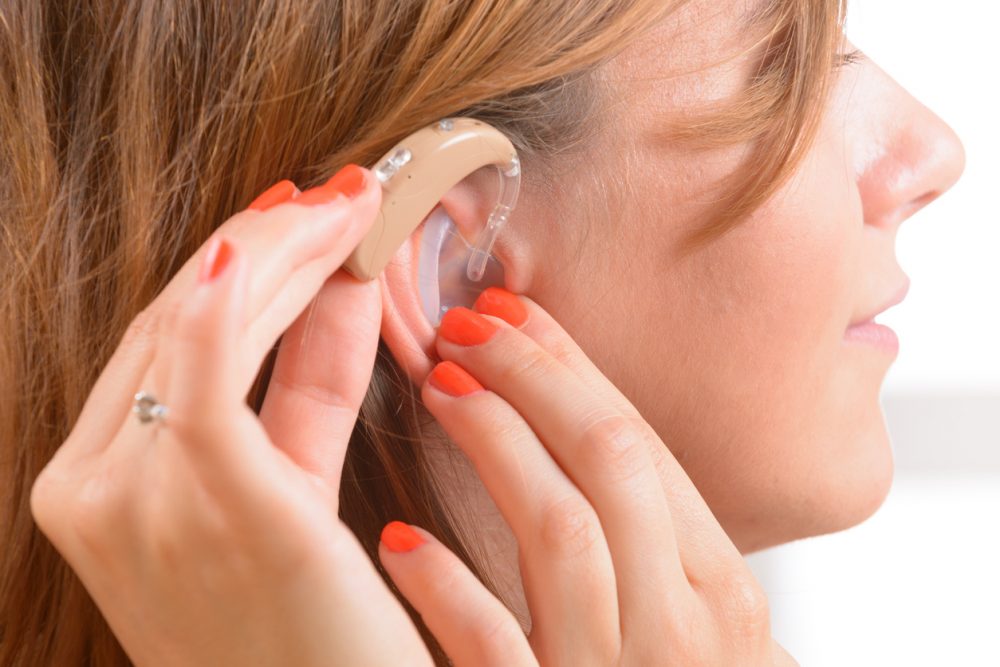
Best Hearing Aids: How much do hearing aids cost?
There’s no way to sugarcoat it, hearing aids, especially the ones considered to be the best hearing aids in the market, are expensive. The good ones start at around $1,000 and may go as high as $6,000 or more. Of course, there are hearing aids sold at a lower price, otherwise known as budget hearing aids, but it would be best if you would consult with a hearing health professional first before shopping for a set of hearing aids. This article aims to guide consumers in choosing the best hearing aids in the market, whether it is low-cost, mid-range or belonging in the higher price range.
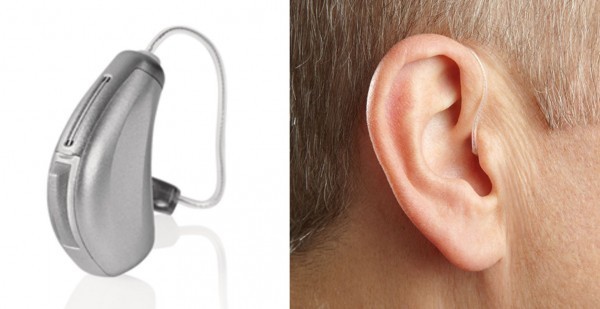
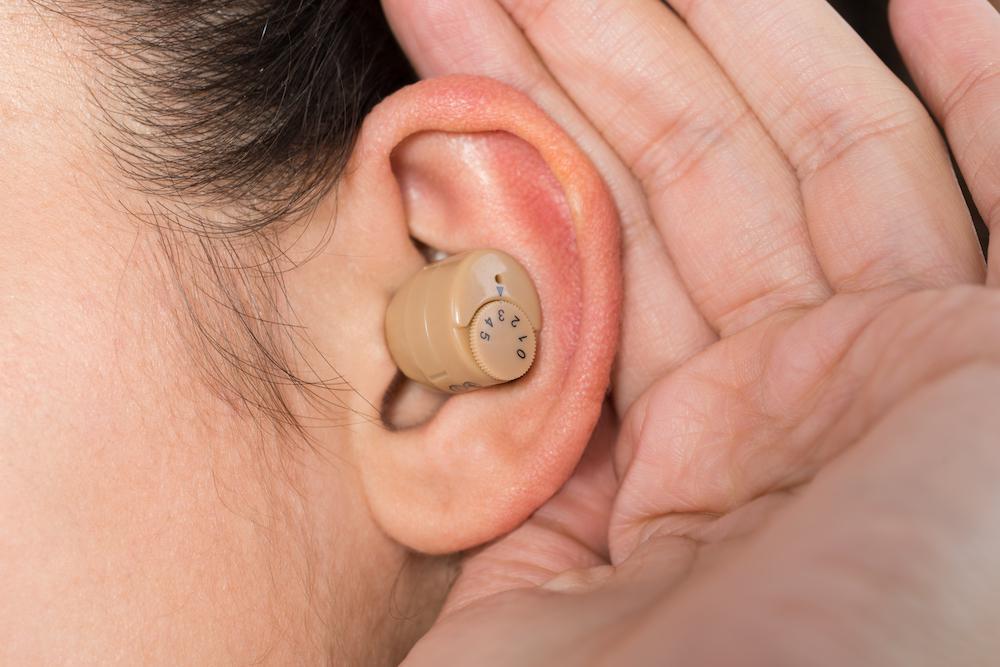
When Should You Consider Hearing Aids?
A very obvious answer to this question would be – when you can no longer hear or understand what the person in front of you is saying. However, do we really have to wait for this to happen? People with normal hearing can pick up sounds less than 25 decibels. If the lightest sounds you can hear are at 30 decibels or louder, then you may be missing out on a significant amount of what is being said to you, making you a plausible candidate for a hearing aid. Before purchasing a hearing aid, make sure that you are getting adequate information about the brand or model that you are eyeing. And it’s not all about pricing – you also have to look into the nitty gritty details – it’s updated features, accessories, rechargeable batteries, Bluetooth technology, repair, maintenance, warranty support, etc. Choosing among the best hearing aids in the market can be really overwhelming; you need to balance pros and cons, look into the product features and weigh in the cost versus performance. It would be really helpful if you consult with an audiologist, hearing specialist or a trained salesperson to make sure that the model that you’re going to purchase will address your hearing loss needs.
Causes of Hearing Loss
Before we continue with giving you the lowdown on the best hearing aids in the market, it would be a good idea if we discussed briefly about the causes of hearing loss so you, as a buyer, will also have an idea on how sound waves and electrical signals work to complete the process of supplementing hearing via hearing aids.
The most common type of hearing loss is sensorineural hearing loss. It is basically caused by damaged, tiny hair cells found in the inner ear. The cells are what was supposed to be the ones to convert incoming sound waves into electrical signals which are then transported to the brain which are then converted to meaningful sounds. Chronic exposure to loud noises and aging are the most common causes of hair cell damage. However, hearing loss may also be caused by certain illnesses, medications or family history. Sensorineural loss is irreversible but it can be managed by hearing aids that are designed for selective sound amplification. This is where choosing the best hearing aids becomes really essential.
Another type of hearing loss is conductive hearing loss. This type of hearing loss is less common and is often a result of malformation of the middle or outer ear or a physical blockage. Fluid buildup in the middle ear, impacted ear wax and other specific medical conditions can block sound from reaching the inner ear. Primarily, the first thing an audiologist or ENT can offer is to treat infections, remove wax buildup or have corrective surgery. If all of these fail, a hearing aid may be suggested; again, this is where best hearing aids become really essential.
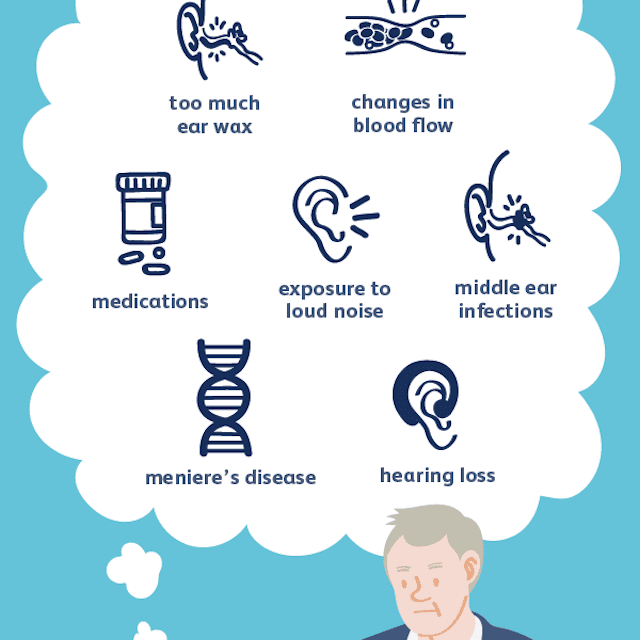
Best Hearing Aids: Severe Hearing Loss
One popular question about hearing aids is if it can manage severe hearing loss. In cases of severe hearing loss, whether in both ears or in just one ear, audiologists offer cochlear implants. Besting even the best hearing aids in the market, cochlear implants electrically stimulates the auditory nerve by strategically bypassing the damaged hair cells.
Best Hearing Aids: Understanding How It Works
A hearing aid is not just an accessory – best hearing aids help people with hearing loss appreciate life and listen to the people they care about. Watching a movie or television, listening to music and podcasts can be achieved with a pair of the best hearing aids in the industry. With the best hearing aids, people suffering from hearing loss no longer have to feel out of place because the device can act as the receiver and transmitter of sound for effective communication.
The best hearing aids have a built-in microphone to pick up sound, an amplifier made to make sounds louder and a receiver that transmits sound into the ear canal. Modern digital hearing aids have microphones that transport sound to a computer chip and adjust the volume and amplify essential sound frequency to help boost hearing. Manual or analog hearing aids are less common nowadays but they are mostly preferred by seniors because they are more user-friendly and the components are less complicated.
If you need help in programming a digital hearing aid, hearing health professionals can offer their services. They can filter out background noise and wind and also fine tune the hearing aid to match an individual’s hearing loss pattern. Thanks to modern technology, the best hearing aids in the market already have the default feature of being able to sync wirelessly with a smartphone, allowing users to stream audio, take a call or adjust a hearing aid’s settings through an app.
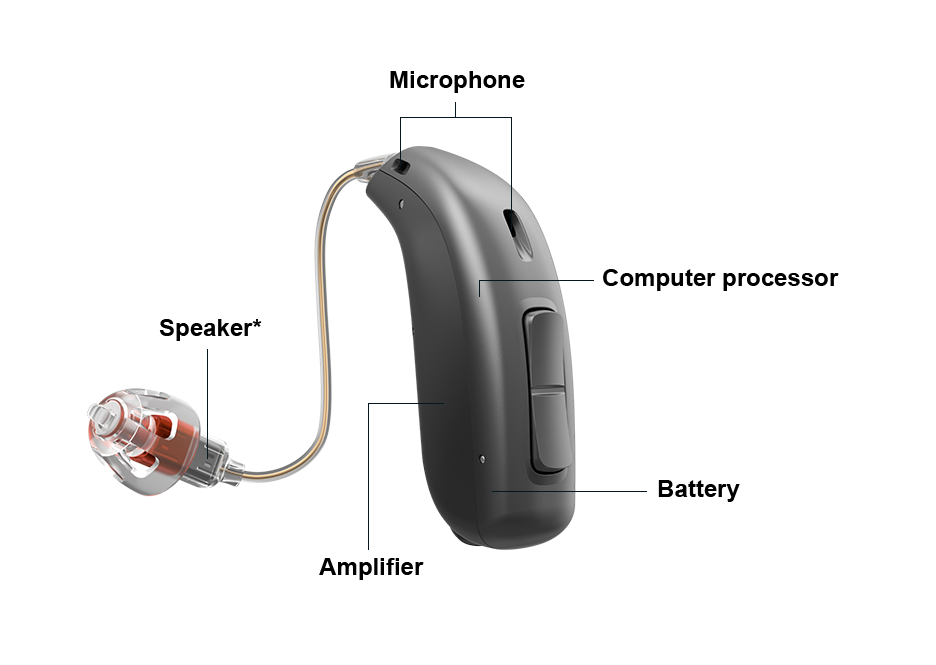
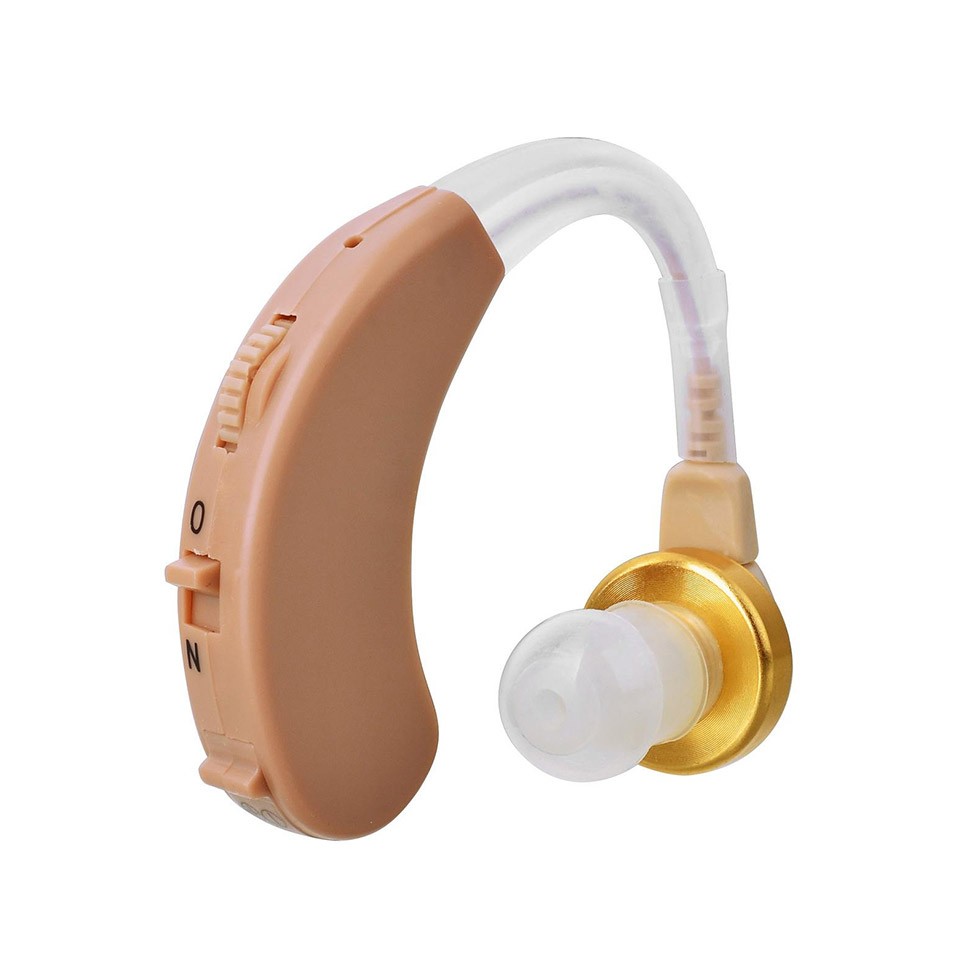
Choosing the Best Hearing Aids
There is no such thing as the best hearing aid in the market; each brand and model covers a specific hearing loss need, which a user really needs to review or discuss with an audiologist before fitting or purchasing. Choosing the best hearing aids requires a thorough review of several factors, including the severity and type of hearing loss, manual dexterity and lifestyle.
A pair of the best hearing aids for someone might not be suitable for someone else. Each person has a unique set of hearing loss needs and that is where proper fitting and adjustment needs to be carried out.
Take note that even the best hearing aids will never be able to remove background noise completely. You might be thinking that the best hearing aids will magically remove or filter out background noise and make you hear only the person speaking in front of you; sadly, that is not the case. According to Dr. Patricia Chute, Ed.D, VP for academic affairs at Dalton State College, hearing aids can help people improve their hearing, however, it’s not really going to bring hearing back to normal.
You need to understand that there are also devices out there that can act as amplifiers or as an alternative to hearing aids. However, it’s best to consult with an audiologist to make sure that you are getting the correct device for your hearing requirements.
Best Hearing Aid Types Guide
Digital hearing aids are available in five major styles and are mainly categorized by how they are worn in or on the ear. Each type of hearing aid types are top rated in their own way, depending on their features, electronic components, battery life and overall function. In a survey conducted by Consumer Reports in 2018, majority of the respondents (roughly 71%), preferred mini behind the ear types of hearing aids. Below are the types of best hearing aids in the market:
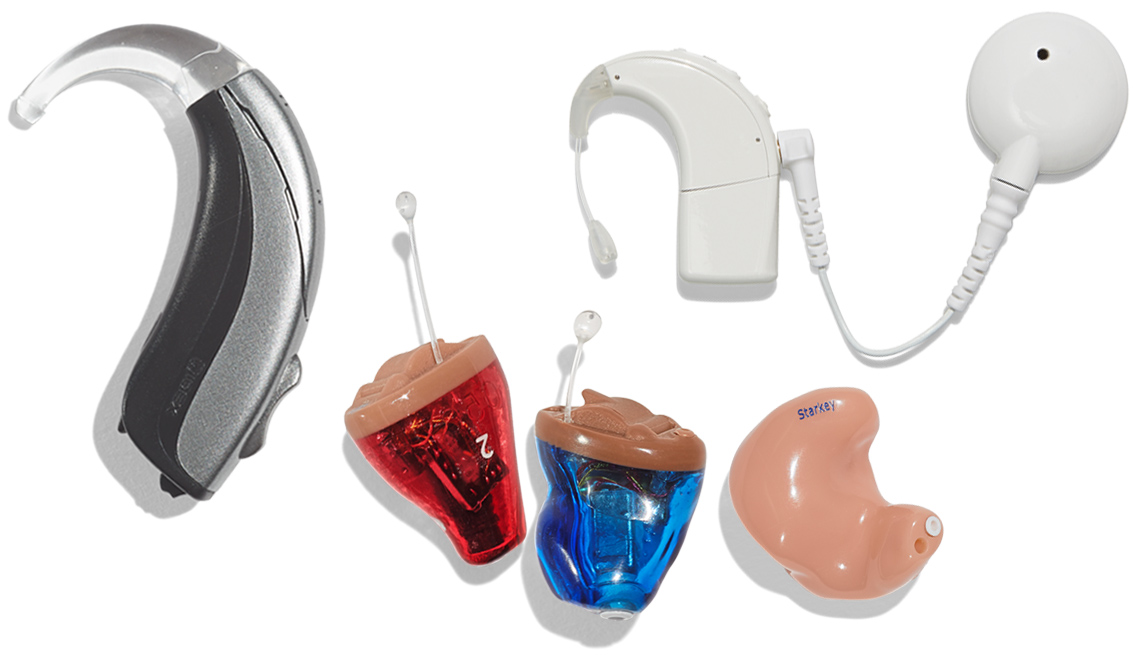
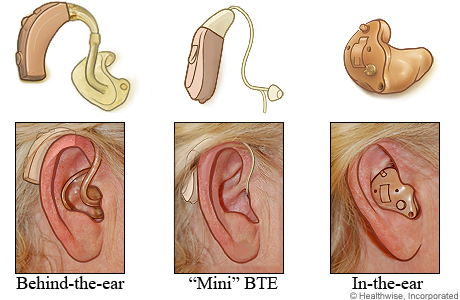
Mini-Behind-the-Ear Hearing Aid
This type is known by various names including canal receiver technology (CRT), receiver-in-the-ear (RITE), and receiver-in-the-aid (RITA). In this type of hearing aid, the receiver is situated inside the ear canal. It is attached to the ear by a thin wire and a custom earmold or a non-custom dome style earpiece fit for the ear canal.
Pros: Prevents a plugged-up feeling | barely visible | comfortable | easy to insert
Cons: No significant amplification particularly in the low frequencies | wax and moisture buildup
Best Hearing Aids: Traditional Behind-the-Ear Hearing Aid (BTE)
This type of best hearing aids may sometimes include receiver-in-the-aid devices. The electronic components are enclosed in the plastic case worn by a user behind the ear. Sound signals are sent to the ear via a tube that connects the case to the device’s receiver and a custom earmold situated in the ear canal.
Pros: flexible | can accommodate low and high frequency amplification | ideal for people with severe hearing loss | user friendly control interface | telecoil mode easy to use | custom earmold can be cleaned easily | can accommodate larger batteries | rare occurrence of feedback
Cons: some custom molds may be visible | vulnerable to wax and sweat buildup | may cause a plugged-up feeling
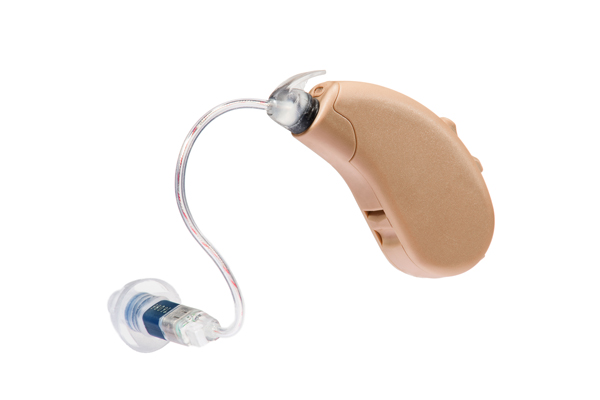
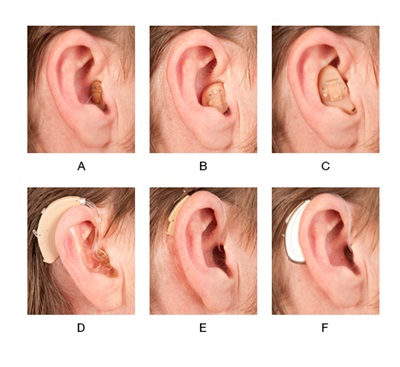
Best Hearing Aids: Completely-in-the-Canal Hearing Aid (CIC)
Pros: fits tight and snug in the ear | minimal feedback | low visibility, can be removed with a string | less sensitive to wind noise
Cons: too small for a directional microphone | may give a plugged up feeling | vulnerable to moisture and wax buildup | battery life is relatively short | difficult to remove batteries | hearing aid may be difficult to adjust
Best Hearing Aids: In-the-Canal Hearing Aid (ITC)
Pros: larger units can accommodate directional microphones | barely visible | less plugged up feeling
Cons: may cause discomfort | vulnerable to moisture | receiver may be at risk for earwax clogging | small batteries, short battery life | challenging to adjust and handle
Best Hearing Aids: Traditional In-the-Ear Hearing Aid (ITE)
Similar to the behind-the-ear hearing aid, all electronic components of the traditional in-ear hearing aid are included in the case, situated in the bowl of the outer ear.
Pros: has more room for directional microphone, telecoil and wireless streaming | less plugged up feeling | easy to insert
Cons: more visible | might not be as powerful as other BTE hearing aids because it is smaller
Best Hearing Aids: Features to Look Out For
When shopping for the best hearing aids, you as a consumer need to be aware of your specific needs when it comes to a hearing device. Some consumers are looking out for rechargeable batteries, while some also need the best hearing aids that can control tinnitus, accommodate smartphone capabilities or offer automatic noise level adjustment.
Consumers may also expect multiple program settings, microphone features and wireless connectivity from the best hearing aids available in the market. Below are other key features as shared by hearing aid experts:
Telecoil. This is an option offered by some of the best hearing aids on the market. A telecoil is a copper wire or small sensor that is placed inside the hearing aid. When it is activated, the telecoil picks up a magnetic signal wirelessly from hearing aid compatible public address systems and telephones. These may be found in subway trains, conference rooms, museums, taxis and concert halls. A hearing loop or induction loop emits the signal which is then picked up by the telecoil. This technology helps people with moderate to profound hearing loss to better comprehend a speaker’s voice by eliminating background noise and making the voice louder. Ask your hearing aid retailer for a manual T-switch to enable seamless connection to loop systems.
Directional Microphone. Best hearing aids most often have a directional microphone, which help users converse even in noisy environments. Directional microphones make the audio signal in front of the wearer louder than the noise coming from the sides or rear. Directional microphone technology is observed to work best when the wearer is close to the source. All the best hearing aids with this feature can automatically switch between directional and omnidirectional functions, depending on the ambience. More advanced versions can be adjusted to focus on sounds on the listener’s side or behind the listener. One drawback of a directional microphone is that it is prone to pick up wind noise.
Feedback Suppression. Also known as digital feedback reduction, this feature found in the best hearing aids helps control high-pitched whistling sounds. Most of the best hearing aids in the market already have this feature but the effectiveness may differ per brand or model. Feedback suppression is very useful if the wearer is close to the phone or if the hearing aid is slightly askew or dislodged from the ear. Best hearing aids offer feedback suppression to allow more comfort, venting and better sound quality for hearing aid wearers with good hearing in low pitches. A proper hearing aid fit can also effectively reduce feedback.
High end best hearing aids have Bluetooth wireless technology that allows users to stream calls and music from smartphones, computers and TVs directly through their hearing aid. Some hearing aids also have a frequency shifting technology, ideal for individuals who have hearing problems in the high frequencies or pitches. Best hearing aids in the market may also come with remote microphones, otherwise known as spouse mics. Other notable features include smartphone remotes and more.

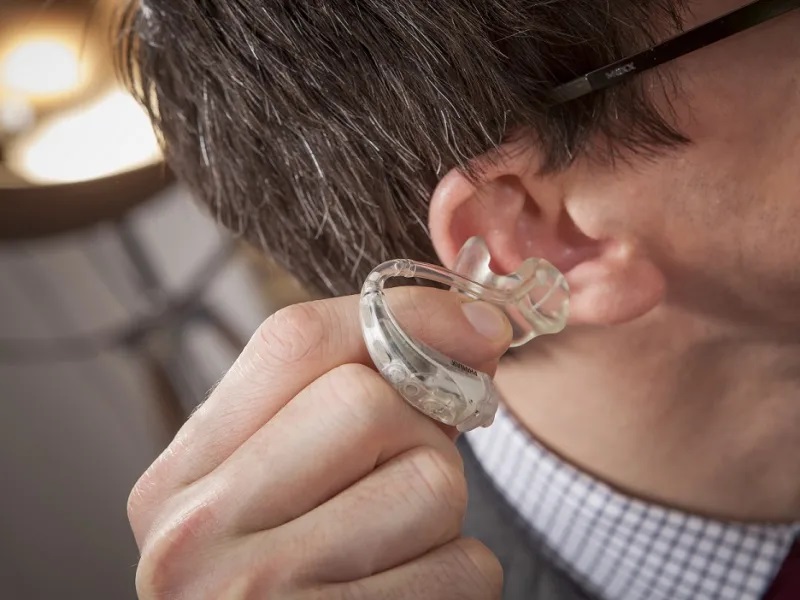
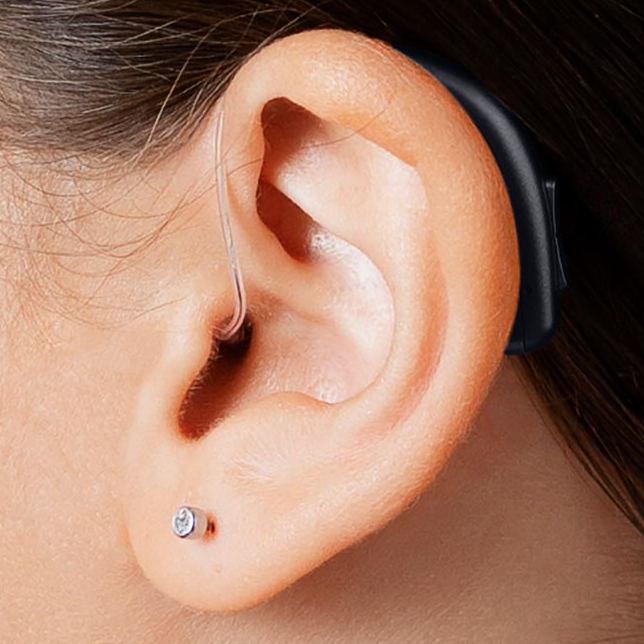
Best Hearing Aids: Choosing The Right Provider
When on the journey of choosing the best hearing aids, all efforts of canvassing and checking out product features would be futile if you do not get properly checked by a hearing health professional or audiologist.
If you notice that you or someone you know is having difficulty hearing, you can approach a doctor, specifically an otolaryngologist who specializes in ear, nose and throat concerns. After assessment, you may be referred to an audiologist for proper fitting so you can maximize the potential of the best hearing aids.
Audiologists can rule out or determine if you have an underlying medical issue (i.e ear tumor, impacted earwax, bacterial infection, etc) that might be causing your hearing loss. The audiologist will then conduct some tests to assess and prepare the baseline hearing aid requirements. Audiologists will match your ability to comprehend speech in many different settings and your listening needs to the appropriate technologies, otherwise known as the best hearing aids for you.
A lot of audiologists work in freestanding offices or private practices, where individuals with hearing loss can purchase their hearing aids. Audiologists may also be part of the staff of wholesale clubs such as Costco or other hearing aid stores owned by Widex, Starkey, Oticon, Phonal, ReSound and Starkey. With all the available hearing aids in the market, it may be quite overwhelming to choose among the best hearing aids, but with the help of an audiologist plus your hearing assessment and diagnostic results, it will be easier for you to pick the best brand or model that will perfectly suit your needs and lifestyle.
Shopping For the Best Hearing Aids – Budget Version
There are some individuals diagnosed with hearing loss that are hesitant to purchase the best hearing aids for them because they are worried that they may not be able to afford them or that they may not be able to keep up with the maintenance expenses such as changing batteries, routinary cleaning and/or repairs.
If you think you need a pair of the best hearing aids in the market but worry about the cost, below are some tips that might help you.
Coverage Check. Let’s go back to basics – review your health coverage and check if hearing aids might be covered. While most insurance does not cover hearing aids, some veterans, federal workers, seniors, children and residents of selected states in the US can get them covered. There are also a few plans, such as Medicare Advantage, that offer discounts or partial coverage to help individuals acquire the best hearing aids.
Details in the contract. Upon purchase, make sure that you review the details in the contract, especially the part where it allows you to return the hearing aids or get your money back if ever you’re not satisfied with the product. The trial period, warranty length, warranty coverage, loss and damage coverage, adjustment coverage also need to be looked into. Acquiring the best hearing aids may be a trial and error process but once you find the right one, it will be totally worth it.
Stick to the basics. If you want to get the best hearing aids that you can afford, be a smart consumer and purchase only what you need. To elaborate, you don’t really need to purchase a hearing aid that is jam packed with features, especially if you only need basic functions. For example, Bluetooth capability – while it is undeniably a convenient feature, it can add up to your bill. If you think that you can do away with Bluetooth capability, then skip it. Economy hearing aids can still be the best hearing aids for you, providing your hearing loss needs without necessarily breaking the bank. Don’t be scared or shy to ask your provider to compare your performance on speech-in-noise tests using an economy aid vs a premium hearing aid. When choosing the best hearing aids while on a budget, the provider will be a big help in the selection process.
Be on the lookout for bargains. Clothes, shoes and makeup go on sale; hearing aids also go on sale! If you’re on the lookout for the best hearing aids but don’t have enough cash to spend, you can check out some bargains or discounts on the internet. You can also go to Costco and browse through their quality hearing aids that are sold at very competitive prices. Selected Costco branches have in-house audiologists so make sure to give your preferred branch a call before going there to save time and effort. You can also search for the best hearing aids online but there might be some drawbacks such as having to return them for proper fitting and adjustment or you may end up bringing your online purchase to a local hearing specialist for adjustment or programming.
Reach out to organizations that offer assistance. There are lots of organizations or foundations in the United States that offer assistance to the hearing impaired such as the Lions Clubs or Starkey Hearing Aid Foundation, to name a few. They may not be able to shoulder 100% of the cost but their assistance will be truly helpful in helping you acquire the best hearing aids that you desire.
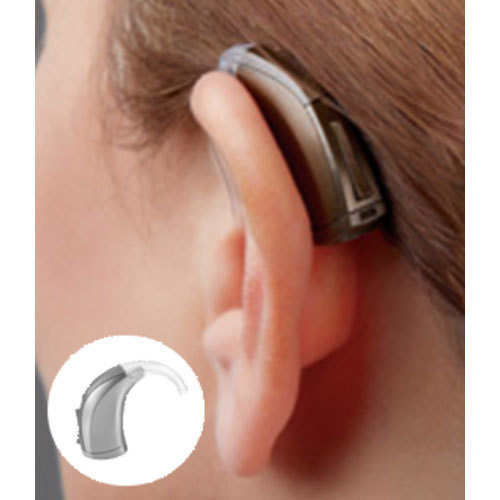
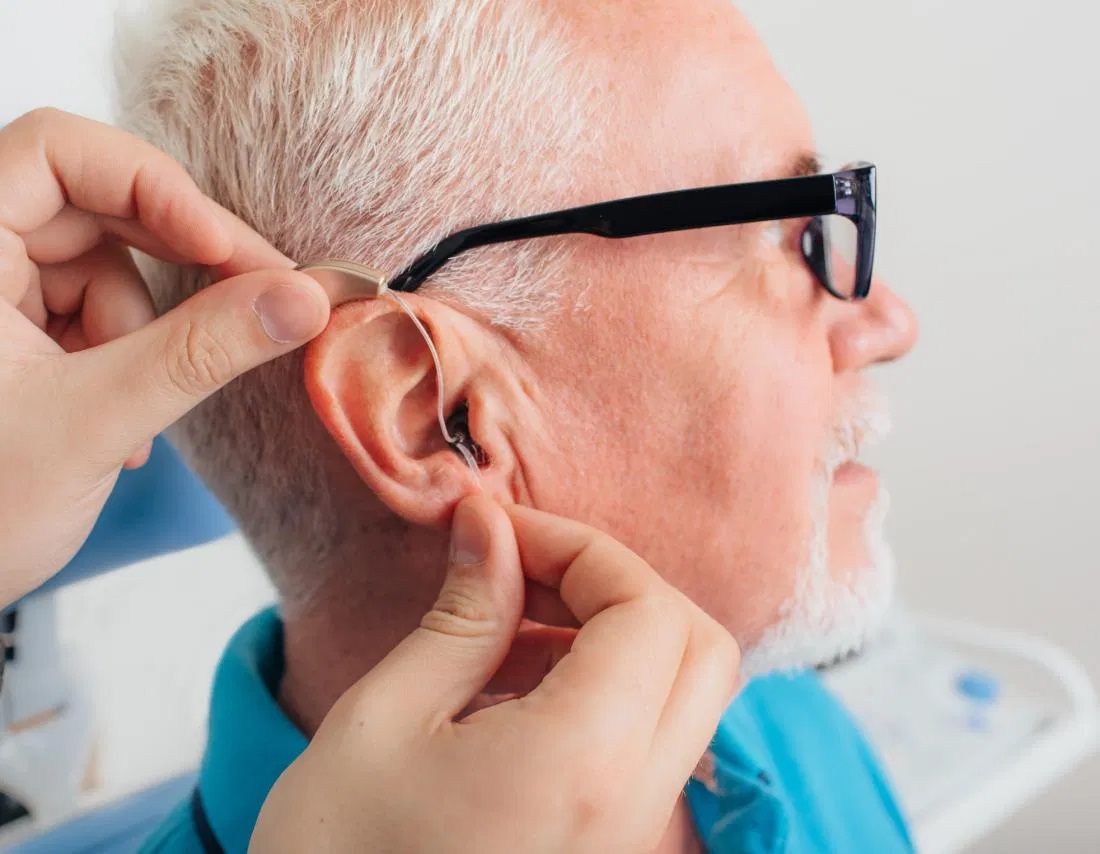
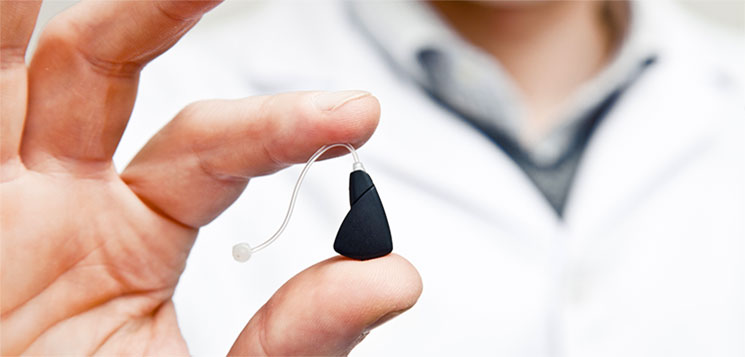
Getting Used to Your New Hearing Aid
Once your chosen hearing aid is ready for pick-up, expect that there will really be adjustments on your part. Getting used to wearing a hearing aid may take some time, but with patience and determination, things will get easier. Make sure that your hearing care provider will perform a real ear measure to measure if the hearing aid is responding appropriately to your unique hearing loss needs. Remember, even the best hearing aids in the world will be useless if it is not adjusted or programmed properly. The best hearing aids should also be comfortable and not burdensome to the wearer. If ever you feel pressure, discomfort or pain, inform your provider immediately so he or she can make the necessary adjustments.
Best Hearing Aids: Adjusting to the New Normal
Wearing a hearing device, even one which is considered to be the best hearing aids, needs a lot of adjustment on the part of a wearer. Seniors are usually the most hesitant when it comes to wearing hearing aids because they are somewhat skeptical of the new technology that they need to come to terms with. However, with the right guidance and product information, the best hearing aids will take speech and communication of individuals with hearing loss to a whole new level. The best hearing aids are essential in maintaining a functional lifestyle, where a consumer can participate in a conversation effectively and be aware of what’s happening in his or her environment.
At the end of the day, the best hearing aids are not determined by how expensive its price is; it all boils down to how effective it is in making your communication with your family, friends and colleagues better. The best hearing aids add value to your lifestyle and make sure that you are functioning at your optimum.
In the mood to splurge for your music whims? Check our our list of the most expensive headphones that’s worth every penny.

